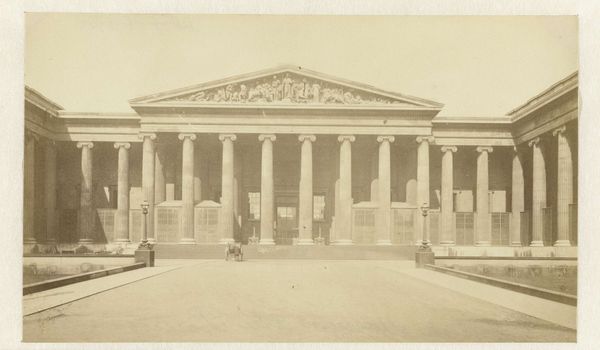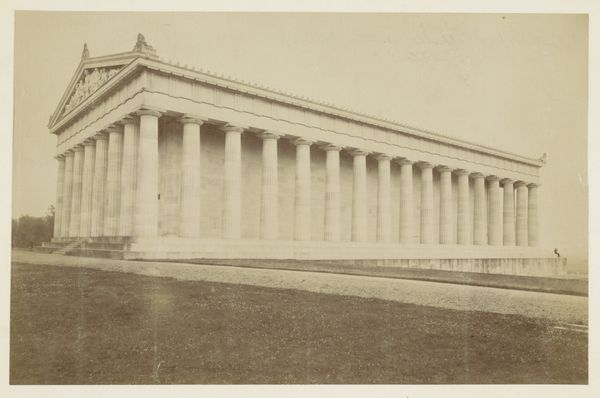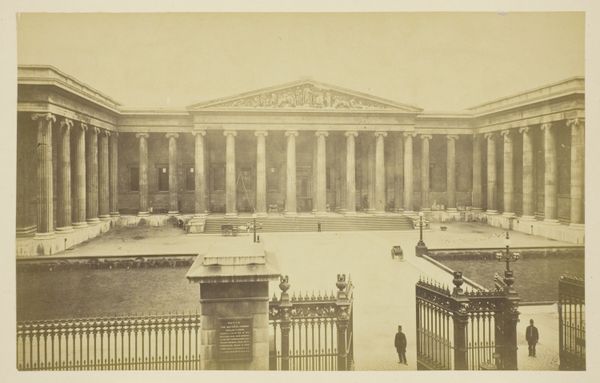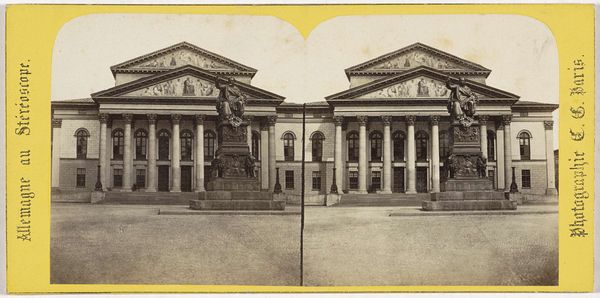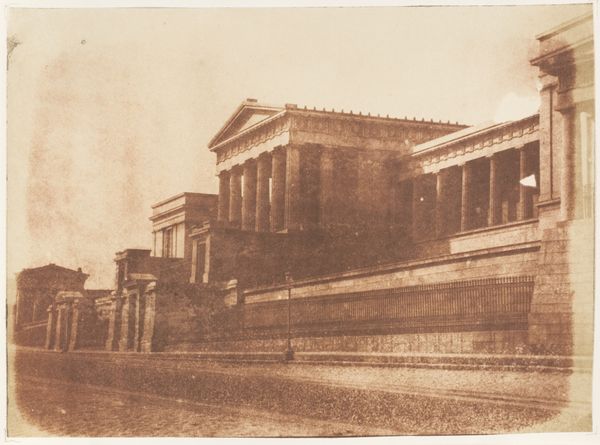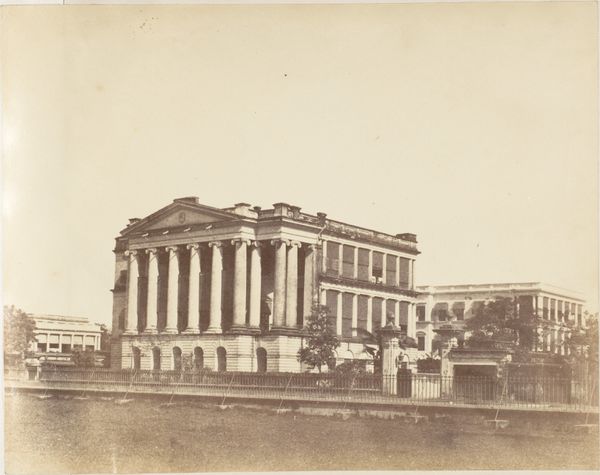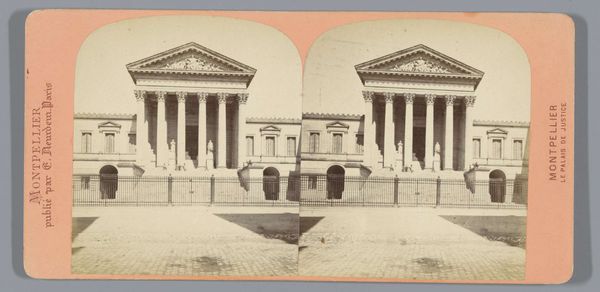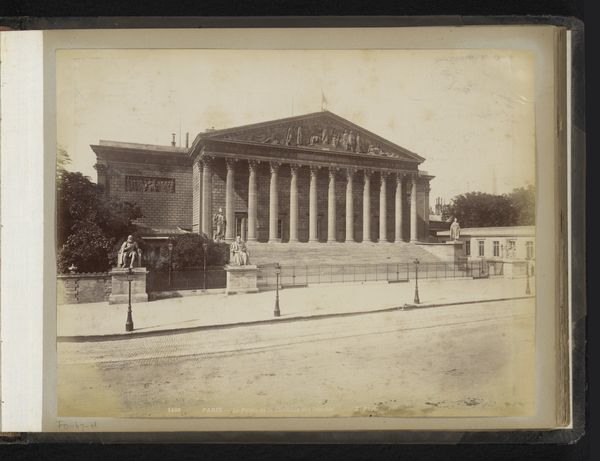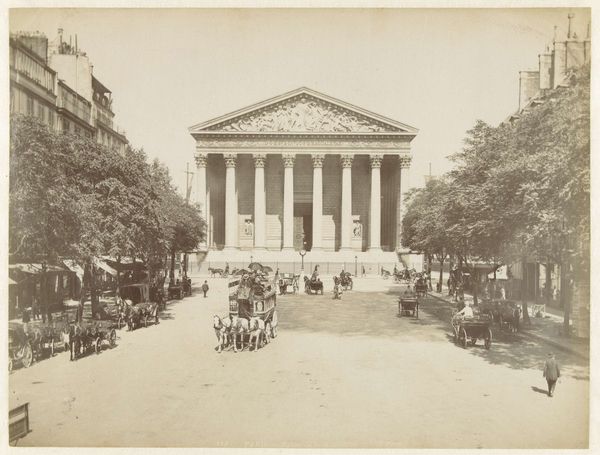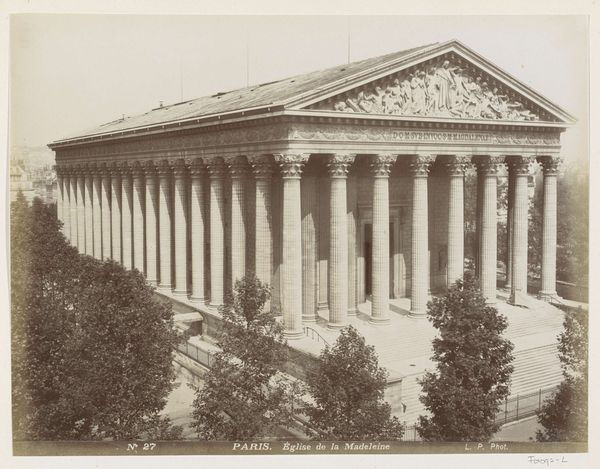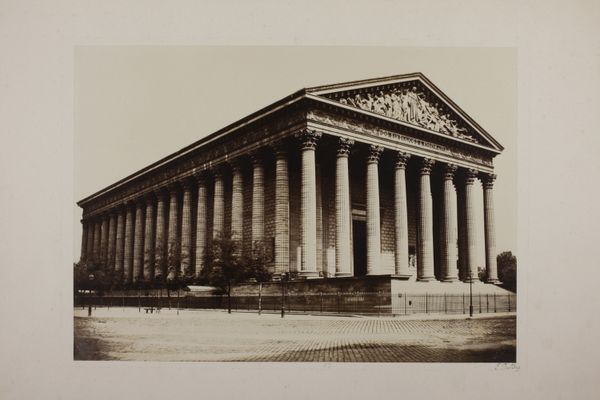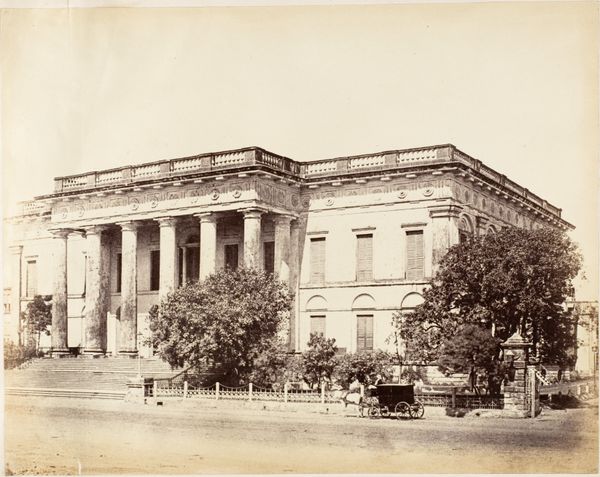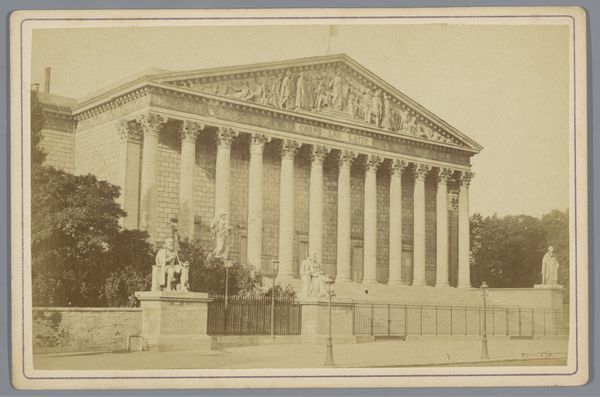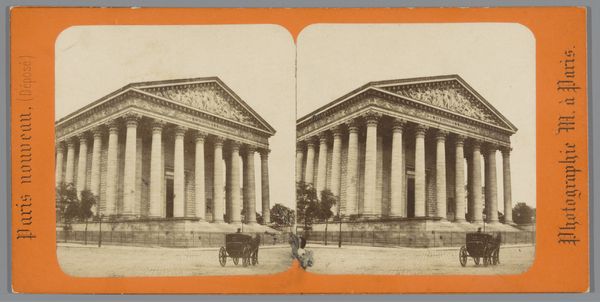
Dimensions: height 110 mm, width 167 mm, height 341 mm, width 243 mm
Copyright: Rijks Museum: Open Domain
Curator: This albumen print, created by Francis Godolphin Osbourne Stuart between 1870 and 1881, showcases the British Museum in London. Editor: Immediately striking. The sheer scale! And that rigid symmetry creates a powerful sense of institutional authority. Almost imposing, wouldn’t you say? Curator: Indeed. The photographic process itself contributes to this sense of permanence. Albumen prints, especially in architectural studies, lend a sharp focus to the immutable details, emphasizing the calculated ratios, the perfect alignment of each Doric column. Editor: But think about the labor involved. Extracting albumen from eggs for the photographic emulsion, preparing the collodion, carefully coating the glass plates. Photography in this era was so incredibly hands-on! The resulting image masks the process, though. Do we lose something by only focusing on this building and ignoring the manual labor that birthed this image? Curator: Not at all. Look closely. See how the light and shadow play upon each column. Observe the texture rendered by the process. These gradations reveal how the image performs both as a document and as an artifact with aesthetic value. Editor: The architecture speaks to a very specific time and place—British colonialism at its height. The very concept of a museum, housing plundered objects… the picture seems innocent but its loaded with meaning about production and exploitation. I feel an echo of that within these receding lines. Curator: The image’s perspective certainly commands respect. Each building is rendered with geometrical precision, a powerful order within the composition. A reflection of societal hierarchies, but expressed elegantly through light, form, and balance. Editor: Thinking about what went into creating it—all that chemical handling, the cost of materials – adds layers. It's about more than just recording the museum; it's about understanding Victorian era photographic labor. Curator: It is an historical document, absolutely, a testament to a past aesthetic, now made present through this durable physical format. Editor: Ultimately it is about the unseen aspects, the labour which are vital to see the entire truth, revealing to a much higher level of consideration.
Comments
No comments
Be the first to comment and join the conversation on the ultimate creative platform.
